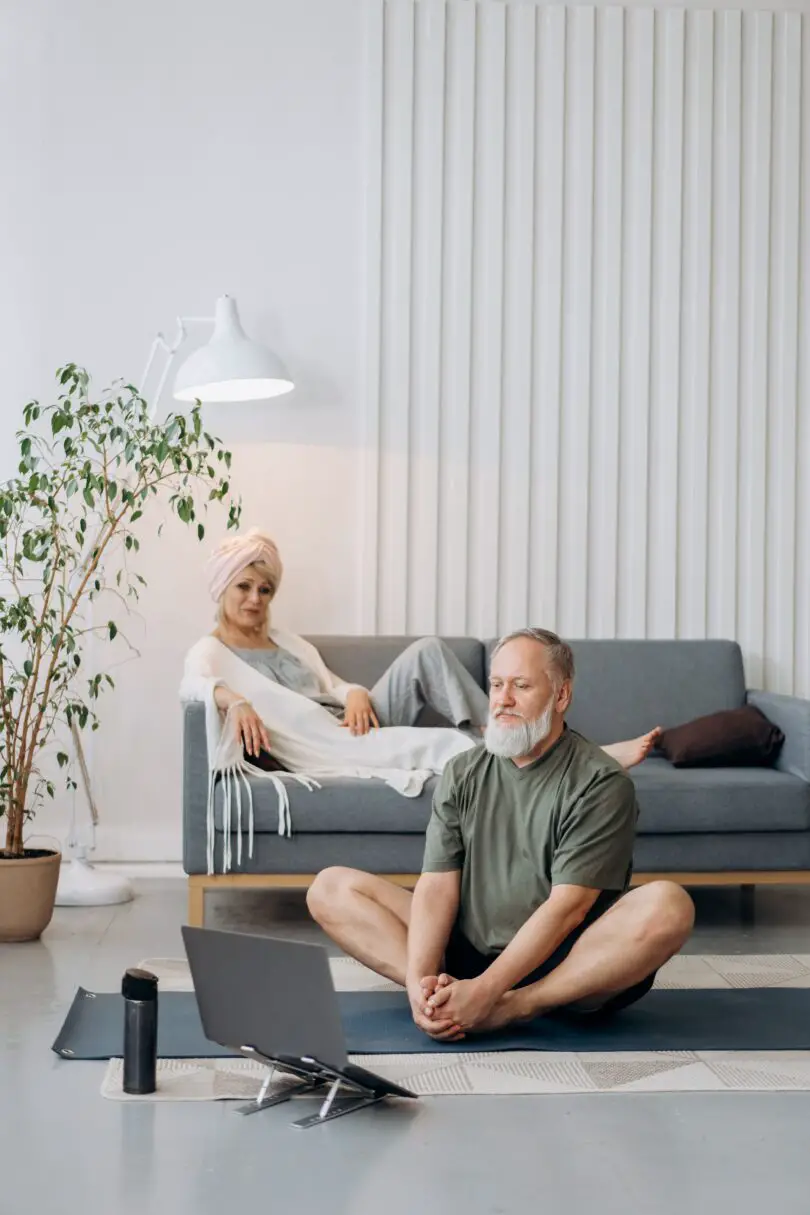Table of Contents
Introduction
As we gracefully age, the importance of holistic well-being becomes increasingly evident. In the pursuit of health, more and more seniors are turning to yoga as a means to enhance physical fitness, mental clarity, and overall quality of life. In this article, we delve into the world of yoga for elderly persons, exploring its benefits, tailored practices, and practical tips to embrace this ancient discipline.
Understanding the Unique Needs of Elderly Practitioners
1. Addressing Physical Limitations
As individuals age, the body undergoes changes that may pose physical limitations. We explore yoga modifications that accommodate these changes, ensuring a safe and effective practice.
2. Enhancing Joint Flexibility
Yoga’s gentle stretches and poses contribute to increased joint flexibility, a crucial aspect for seniors. Learn about poses specifically designed to promote joint health and alleviate stiffness.
3. Improving Balance and Stability
Maintaining balance is vital for preventing falls and injuries among the elderly. Discover how specific yoga poses and sequences aid in enhancing balance and stability, promoting confidence in daily activities.
Tailoring Yoga Practices for Seniors
4. Gentle Yoga for Starters
Seniors new to yoga can benefit greatly from gentle introductory practices. We explore beginner-friendly poses and sequences that provide a foundation for more advanced practices.
5. Chair Yoga for Accessibility
For those with limited mobility or difficulty standing, chair yoga offers a practical solution. Learn about the various seated poses that provide the same benefits as traditional yoga, making it accessible to a broader audience.
Related Article : Chair Yoga for Elderly Beginners
6. Breathwork for Stress Reduction
Stress management is paramount for seniors. Delve into the realm of yogic breathing techniques, exploring how controlled breathing can alleviate stress, anxiety, and promote mental well-being.
The Cognitive Benefits of Yoga for Seniors
7. Mindfulness and Cognitive Function
Yoga isn’t just about physical postures; it’s also a practice of the mind. Uncover how mindfulness and meditation, integral components of yoga, contribute to enhanced cognitive function and mental clarity.
8. Combating Memory Loss
Explore yoga practices that stimulate brain activity, potentially aiding in preventing or mitigating memory loss associated with aging. From meditation to specific poses, discover ways to support cognitive health.
Embracing Yoga as a Social Activity
9. Community Yoga Classes for Seniors
The power of community in yoga cannot be overstated. Learn about the benefits of attending senior-specific yoga classes, fostering a sense of camaraderie and shared well-being.
10. Partner Yoga for Connection
Discover the joy of partner yoga for seniors, a unique and enjoyable way to connect with others while reaping the physical and emotional rewards of shared practice.
Incorporating Yoga into Daily Life
11. Establishing a Consistent Routine
Consistency is key, especially for seniors. Explore the importance of establishing a regular yoga routine, making it a seamless part of daily life for sustained benefits.
12. Adapting Yoga Practices for Home
For those who prefer the comfort of home, learn how to adapt yoga practices to create a personalized routine that can be easily integrated into daily activities.
FAQs (Frequently Asked Questions)
Is yoga safe for elderly individuals with existing health conditions?
Yoga can be adapted to accommodate various health conditions, but it’s essential to consult with a healthcare professional before starting a new practice.
How often should seniors practice yoga?
Ideally, seniors should aim for at least two to three sessions per week, gradually increasing frequency based on individual comfort and ability.
Can yoga help with arthritis pain?
Yes, certain yoga poses and gentle movements can help alleviate arthritis pain by improving joint flexibility and reducing inflammation.
Are there specific yoga styles better suited for the elderly?
Gentle yoga styles, such as Hatha or Restorative, are generally well-suited for seniors due to their focus on slow movements and relaxation.
What equipment is needed for chair yoga?
Chair yoga typically requires a sturdy chair with no arms, allowing for a full range of motion during seated poses.
Conclusion
Incorporating yoga into the lives of elderly individuals brings a myriad of benefits, from physical health to mental well-being. By embracing the tailored practices, understanding the unique needs of seniors, and fostering a sense of community, yoga becomes a transformative tool for unlocking wellness in the golden years.
Related Article : The Importance of Yoga in Our Life







